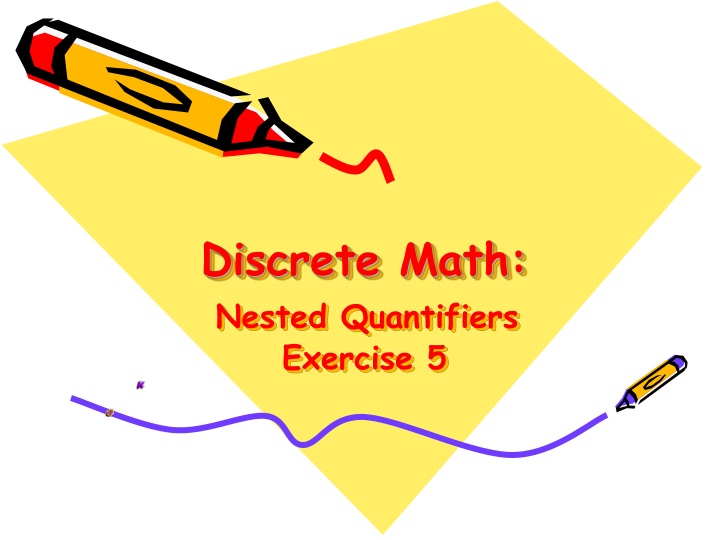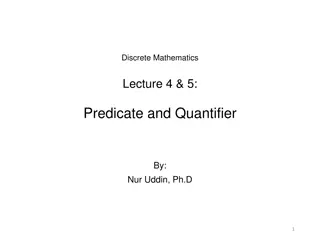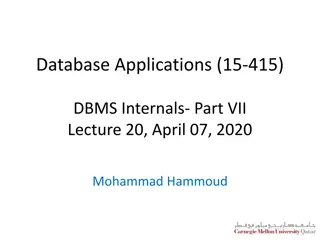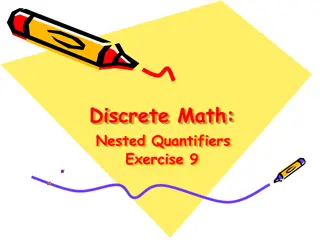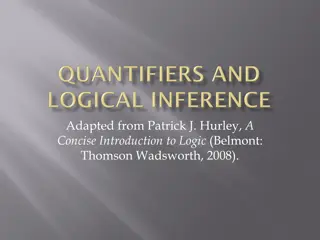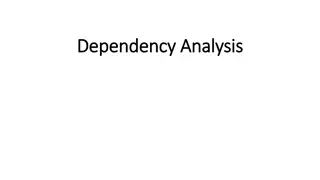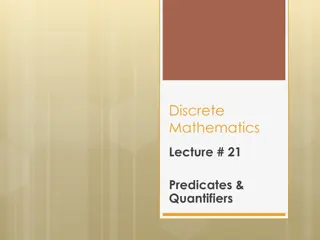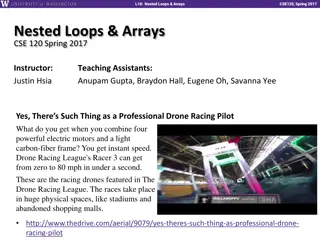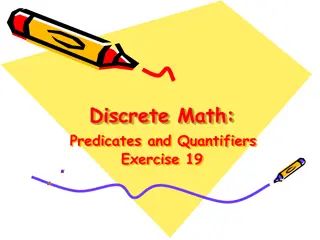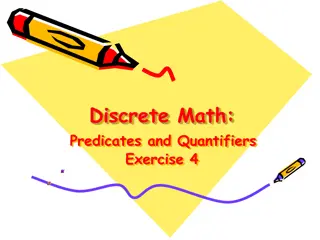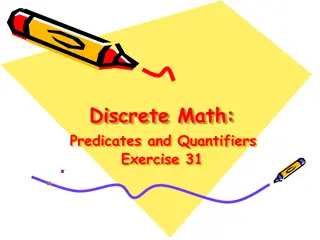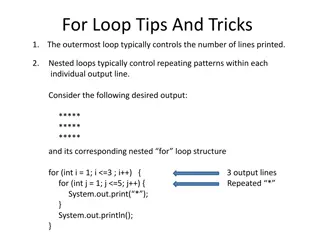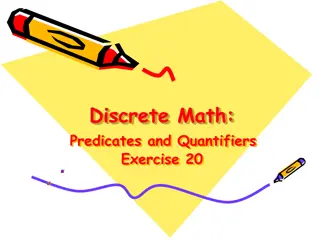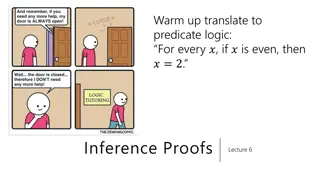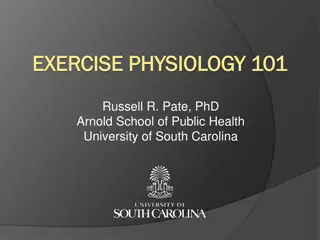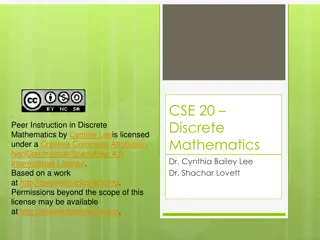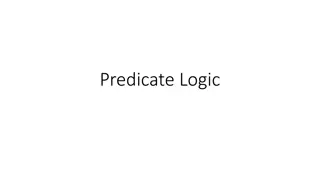Nested Quantifiers Exercise on Love Statements
This exercise involves utilizing nested quantifiers to express various statements related to love between individuals in a world domain. Statements cover scenarios such as everyone loving a particular person, someone not being loved by everyone, self-love, and unique loving relationships. The solutions provide detailed explanations for each statement, guiding through the logical expressions to represent different love scenarios effectively.
Download Presentation

Please find below an Image/Link to download the presentation.
The content on the website is provided AS IS for your information and personal use only. It may not be sold, licensed, or shared on other websites without obtaining consent from the author.If you encounter any issues during the download, it is possible that the publisher has removed the file from their server.
You are allowed to download the files provided on this website for personal or commercial use, subject to the condition that they are used lawfully. All files are the property of their respective owners.
The content on the website is provided AS IS for your information and personal use only. It may not be sold, licensed, or shared on other websites without obtaining consent from the author.
E N D
Presentation Transcript
Discrete Math: Nested Quantifiers Exercise 5
Exercise Let L(x, y) be the statement x loves y, where the domain for both x and y consists of all people in the world. Use quantifiers to express each of these statements. a) Every body loves Jerry. b) Everybody loves somebody. c) There is somebody whom everybody loves. d) Nobody loves everybody. e) There is somebody whom Lydia does not love. f) There is somebody whom no one loves. g) There is exactly one person whom everybody loves. h) There are exactly two people whom Lynn loves. i) Everyone loves himself or herself. j) There is someone who loves no one besides himself or herself.
Solution g) What we have to say is that the x asserted here exists, and that every z satisfying this condition (of being loved by everybody) must equal x. Thus we obtain x ( y L(y, x) z(( wL(w, z)) z = x)). Note that we could have used y as the bound variable where we used w; since the scope of the first use of y had ended before we came to this point in the formula, reusing y as the bound variable would cause no ambiguity.
References Discrete Mathematics and Its Applications, McGraw-Hill; 7th edition (June 26, 2006). Kenneth Rosen Discrete Mathematics An Open Introduction, 2nd edition. Oscar Le in A Short Course in Discrete Mathematics, 01 Dec 2004, Edward Bender & S. Gill Williamson
